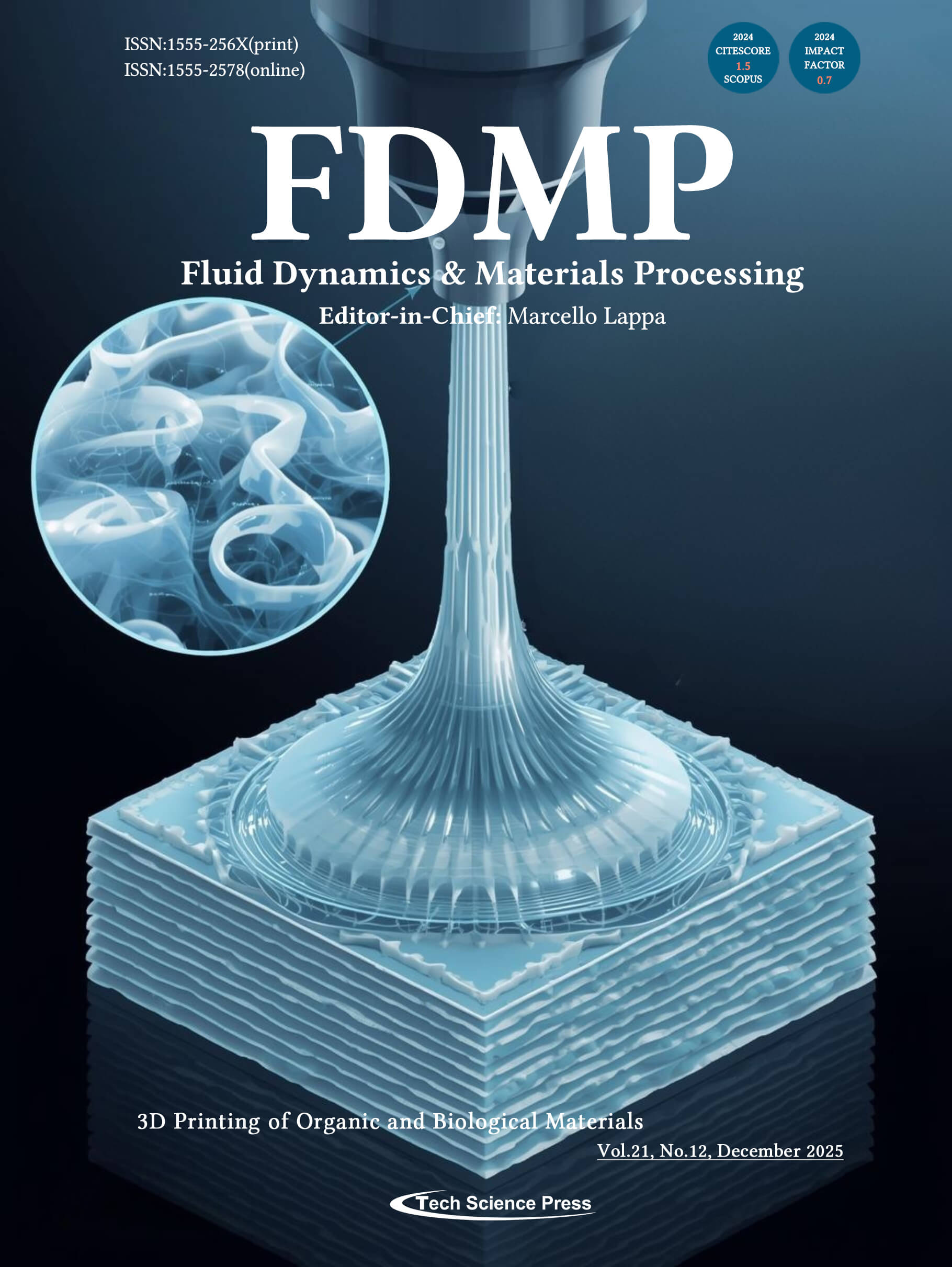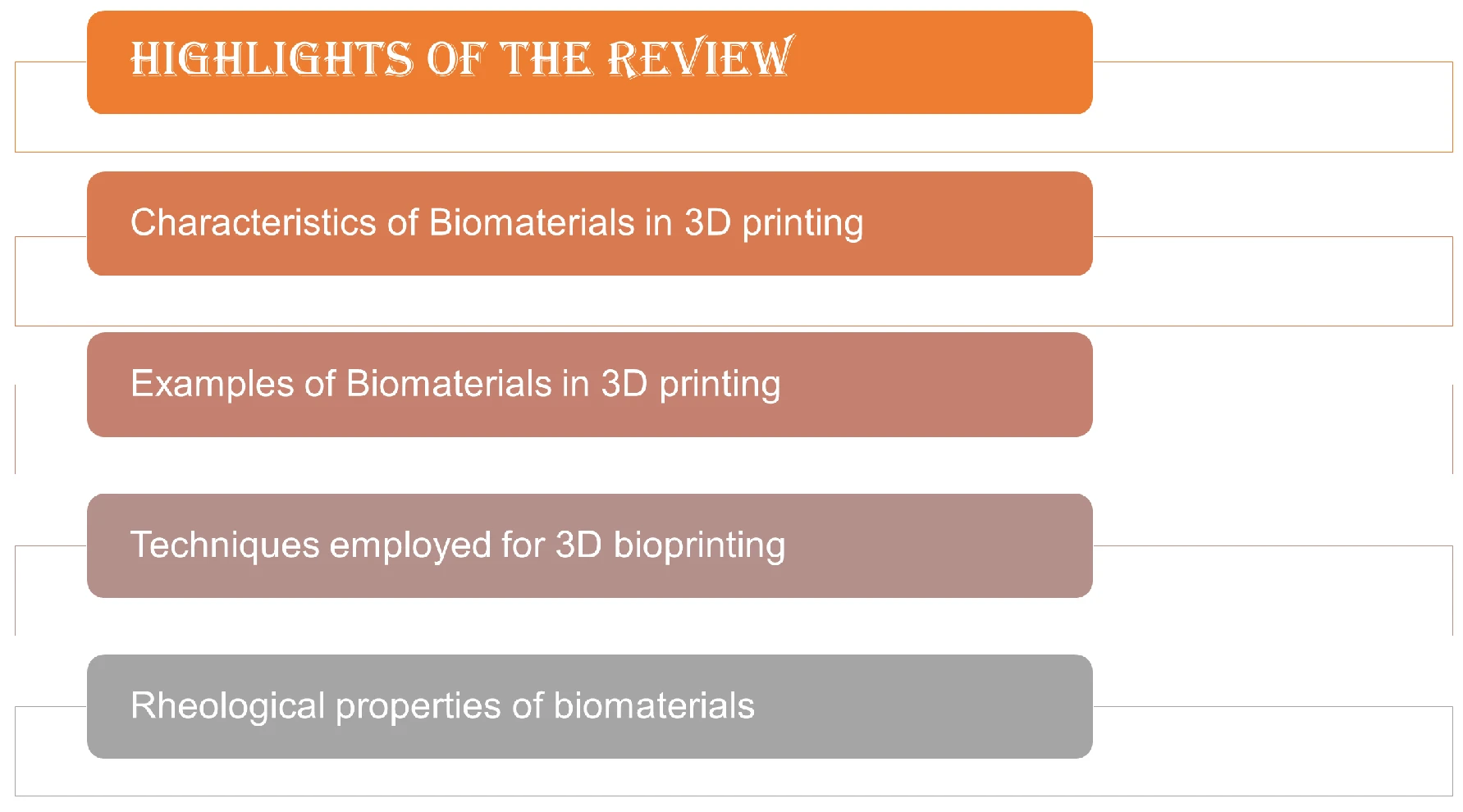
Fluid Dynamics and Materials Processing is an essential reading for all those concerned with complex fluids, multiphase flows and the intersection of fluid dynamics with materials processing and/or with the more general field of engineering optimization. It features original theoretical, computational, and experimental investigations. All subjects where a material, at a certain stage of its “life”, is in a fluid state, behaves as a fluid (e.g. many types of granular media) or interacts with a fluid should be considered relevant to FDMP. Relevant examples include (but are not limited to) the most modern and advanced processes for the production of inorganic (semiconductors, metal alloys, foams, plastics, polymers, ceramic materials, cement, asphalt and resins of various kinds), organic (protein crystals, drugs and medicines) materials and "living" (in vitro) biological tissues. We are especially interested in those studies where emphasis is put on the fluid-dynamic conditions under which a material is operated. However, FDMP also welcomes manuscripts dealing with more fundamental aspects such as the rheological behavior of multiphase systems or the convective currents that are produced in a fluid as a result of the thermal, chemical and/or mechanical stimuli typically applied in various processing or manufacturing methods (e.g. thermal gradients, shaking, mixing, etc). Some attention is devoted as well to all those problems of “structure/fluid” interaction that have extensive background applications in important fields such as marine, chemical, aeronautical and aerospace engineering and the oil sector, i.e. all those cases where fluid-dynamic analysis is instrumental in guiding the design/optimization of the considered systems (or related components) and the selection of the required “materials”.
Emerging Source Citation Index (Web of Science): 0.7; Scopus Citescore (Impact per Publication 2024): 1.5; SNIP (Source Normalized Impact per Paper 2024): 0.350; Engineering Index (Compendex); EBSCO; Google Scholar; Proquest; Portico, etc...
 Open Access
Open Access
REVIEW
FDMP-Fluid Dynamics & Materials Processing, Vol.21, No.12, pp. 2855-2903, 2025, DOI:10.32604/fdmp.2025.069428 - 31 December 2025
Abstract Tissue engineering has advanced remarkably in developing functional tissue substitutes for pharmaceutical and regenerative applications. Among emerging technologies, three-dimensional (3D) printing, or additive manufacturing, enables precise fabrication of biocompatible materials, living cells, and scaffolds into complex, viable constructs. Within regenerative medicine, 3D bioprinting addresses the growing demand for transplantable tissues and organs by assembling biological materials that replicate native architectures. This paper reviews biomaterials used in 3D bioprinting, emphasizing how their rheological behavior, particularly viscoelasticity and thixotropy, governs printability, structural fidelity, and cellular viability. The advantages and limitations of natural, synthetic, and composite bioinks are More >
Graphic Abstract

 Open Access
Open Access
ARTICLE
FDMP-Fluid Dynamics & Materials Processing, Vol.21, No.12, pp. 2905-2925, 2025, DOI:10.32604/fdmp.2025.072979 - 31 December 2025
Abstract Traditional Computational Fluid Dynamics (CFD) simulations are computationally expensive when applied to complex fluid–structure interaction problems and often struggle to capture the essential flow features governing vortex-induced vibrations (VIV) of floating structures. To overcome these limitations, this study develops a hybrid framework that integrates high-fidelity CFD modeling with deep learning techniques to enhance the accuracy and efficiency of VIV response prediction. First, an unstructured finite-volume fluid–structure coupling model is established to generate high-resolution flow field data and extract multi-component time-series feature tensors. These tensors serve as inputs to a Squeeze-and-Excitation Convolutional Neural Network (SE-CNN), which… More >
 Open Access
Open Access
ARTICLE
FDMP-Fluid Dynamics & Materials Processing, Vol.21, No.12, pp. 2927-2943, 2025, DOI:10.32604/fdmp.2025.071115 - 31 December 2025
(This article belongs to the Special Issue: Fluid Mechanics & Thermodynamics in Renewable Energy and HVAC Systems)
Abstract Frost accumulation on the evaporator fins of air source heat pumps (ASHPs) severely degrades heat transfer performance and overall system efficiency. To address this, the present study employs computational fluid dynamics (CFD) to investigate how fin spacing influences frosting behavior, emphasizing the coupled evolution of frost thickness, density, airflow, and temperature distribution within fin channels. Results reveal that fin spacing is a key parameter governing both the extent and rate of frost growth. Wider fin spacing enhances frost accumulation, with a final frost mass of 6.41 g at 12 mm, about 71.8% higher than at More >
 Open Access
Open Access
ARTICLE
FDMP-Fluid Dynamics & Materials Processing, Vol.21, No.12, pp. 2945-2961, 2025, DOI:10.32604/fdmp.2025.073281 - 31 December 2025
(This article belongs to the Special Issue: Model-Based Approaches in Fluid Mechanics: From Theory to industrial Applications)
Abstract Jet pumps often suffer from efficiency losses due to the intense mixing of power and suction fluids, which leads to significant kinetic energy dissipation. Enhancing the efficiency of such pumps requires careful optimization of their structural parameters. In this study, a computational fluid dynamics (CFD) model of a hydraulic jet sand-flushing pump is developed to investigate the effects of throat-to-nozzle distance, area ratio, and throat length on the pump’s sand-carrying performance. An orthogonal experimental design is employed to optimize the structural parameters, while the influence of sand characteristics on pumping performance is systematically evaluated. Complementary… More >
 Open Access
Open Access
ARTICLE
FDMP-Fluid Dynamics & Materials Processing, Vol.21, No.12, pp. 2963-2980, 2025, DOI:10.32604/fdmp.2025.073836 - 31 December 2025
Abstract Gas–liquid two-phase jets exhibit markedly enhanced impact performance due to the violent collapse of entrained bubbles, which generates transient microjets and shock waves. The geometry of the nozzle is a decisive factor in controlling jet formation, flow modulation, and impact efficiency. In this work, the structural optimization of gas–liquid two-phase nozzles was investigated numerically using the Volume of Fluid (VOF). Simulation results show that the aero-shaped nozzle delivers a significantly stronger impact on the target surface than conventional geometries. Specifically, its impact pressure is 21% higher than that of a conical straight nozzle and 37%… More >
Graphic Abstract

 Open Access
Open Access
ARTICLE
FDMP-Fluid Dynamics & Materials Processing, Vol.21, No.12, pp. 2981-2995, 2025, DOI:10.32604/fdmp.2025.073859 - 31 December 2025
(This article belongs to the Special Issue: Subsurface Fluid Flow Dynamics and Applications in Carbon Reduction Technologies)
Abstract Many mature onshore oilfields have entered a high-water-cut stage, with reservoir recovery approaching economic limits. Converting these depleted or nearly depleted reservoirs into underground gas storage (UGS) facilities offers an efficient way to leverage their substantial storage potential. During cyclic gas injection and withdrawal, however, the reservoir experiences complex three-phase flow and repeated stress fluctuations, which can induce rock fatigue, inelastic deformation, and ultimately sand production. This study uses controlled physical experiments to simulate sand production in reservoir rocks subjected to alternating gas injection and production under three-phase conditions. After preparing oil-water-saturated cores through waterflooding,… More >
Graphic Abstract

 Open Access
Open Access
ARTICLE
FDMP-Fluid Dynamics & Materials Processing, Vol.21, No.12, pp. 2997-3009, 2025, DOI:10.32604/fdmp.2025.074456 - 31 December 2025
(This article belongs to the Special Issue: Multiphase Fluid Flow Behaviors in Oil, Gas, Water, and Solid Systems during CCUS Processes in Hydrocarbon Reservoirs)
Abstract Balancing CO2 emission reduction with enhanced gas recovery in carbonate reservoirs remains a key challenge in subsurface energy engineering. This study focuses on the Maokou Formation gas reservoir in the Wolonghe Gas Field, Sichuan Basin, and employs a mechanistic model integrated with numerical simulations that couple CO2–water–rock geochemical interactions to systematically explore the principal engineering and chemical factors governing Carbon Capture, Utilization, and Storage–Enhanced Gas Recovery (CCUS–EGR). The analysis reveals that both the injection–production ratio and gas injection rate exhibit optimal ranges. Maximum gas output under single-parameter variation occurs at an injection–production ratio of 0.7 and… More >
 Open Access
Open Access
ARTICLE
FDMP-Fluid Dynamics & Materials Processing, Vol.21, No.12, pp. 3011-3031, 2025, DOI:10.32604/fdmp.2025.073802 - 31 December 2025
(This article belongs to the Special Issue: Multiphase Fluid Flow Behaviors in Oil, Gas, Water, and Solid Systems during CCUS Processes in Hydrocarbon Reservoirs)
Abstract This study investigates the unsteady flow characteristics of shale oil reservoirs during the depletion development process, with a particular focus on production behavior following fracturing and shut-in stages. Shale reservoirs exhibit distinctive production patterns that differ from traditional oil reservoirs, as their inflow performance does not conform to the classic steady-state relationship. Instead, production is governed by unsteady-state flow behavior, and the combined effects of the wellbore and choke cause the inflow performance curve to evolve dynamically over time. To address these challenges, this study introduces the concept of a “Dynamic IPR curve” and develops… More >
 Open Access
Open Access
ARTICLE
FDMP-Fluid Dynamics & Materials Processing, Vol.21, No.12, pp. 3033-3053, 2025, DOI:10.32604/fdmp.2025.073778 - 31 December 2025
Abstract In deep underground engineering, geological disposal of nuclear waste, and geothermal development, the granite–mortar interface represents a critical weak zone that strongly influences sealing performance under high-temperature conditions. While previous studies have primarily focused on single materials, the dynamic evolution of interface permeability under thermal loading remains insufficiently understood. In this study, time-resolved gas permeability measurements under thermal cycling (20°C → 150°C → 20°C) were conducted, complemented by multi-scale microstructural characterization, to investigate the nonlinear evolution of permeability. Experimental results indicate that interface permeability at room temperature is approximately one order of magnitude higher than… More >
 Open Access
Open Access
ARTICLE
FDMP-Fluid Dynamics & Materials Processing, Vol.21, No.12, pp. 3055-3072, 2025, DOI:10.32604/fdmp.2025.071675 - 31 December 2025
(This article belongs to the Special Issue: Theoretical Foundations and Applications of Multiphase Flow in Pipeline Engineering)
Abstract The adaptation of existing natural gas pipelines for hydrogen transportation has attracted increasing attention in recent years. Yet, whether hydrogen and natural gas stratify under static conditions remains a subject of debate, and experimental evidence is still limited. This study presents an experimental investigation of the concentration distribution of hydrogen–natural gas mixtures under static conditions. Hydrogen concentration was measured using a KTL-2000M-H hydrogen analyzer, with a measurement range of 0–30% (by volume), an accuracy of 1% full scale (FS), and a resolution of 0.01%. Experiments were conducted in a 300 cm riser, filled with uniformly… More >
 Open Access
Open Access
ARTICLE
FDMP-Fluid Dynamics & Materials Processing, Vol.21, No.12, pp. 3073-3090, 2025, DOI:10.32604/fdmp.2025.070685 - 31 December 2025
(This article belongs to the Special Issue: Fluid and Thermal Dynamics in the Development of Unconventional Resources III)
Abstract The development of underground gas storage (UGS) systems is vital for maintaining stability between energy supply and demand. This study explores the dynamic response mechanisms of carbonate reservoirs subjected to intense injection–production cycling during UGS operations. By integrating three-dimensional digital core technology with a coupled poro-mechanical model, we simulate the pore-scale behavior of a representative Huangcaoxia UGS carbonate core. The results demonstrate that fluid–solid coupling effects markedly amplify permeability reduction, far exceeding the influence of porosity variations alone. More significantly, gas production leads to a pronounced decline in permeability driven by rising effective stress, arising More >
 Open Access
Open Access
ARTICLE
FDMP-Fluid Dynamics & Materials Processing, Vol.21, No.12, pp. 3091-3122, 2025, DOI:10.32604/fdmp.2025.070082 - 31 December 2025
Abstract In recent years, tuned liquid dampers (TLDs) have emerged as a focal point of research due to their remarkable potential for structural vibration mitigation. Yet, progress in this field remains constrained by an incomplete understanding of the fundamental mechanisms governing sloshing-induced loads in liquid-filled containers. Aqueducts present a distinctive case, as the capacity of their contained water to function effectively as a TLD remains uncertain. To address this gap, the present study investigates the generation mechanisms of sloshing loads under non-resonant cases through a two-dimensional (2D) computational fluid dynamics (CFD) model developed in ANSYS Fluent.… More >